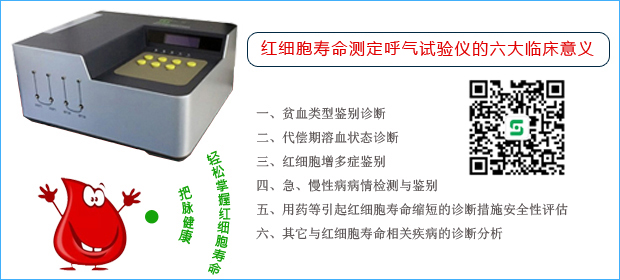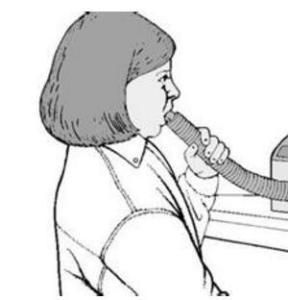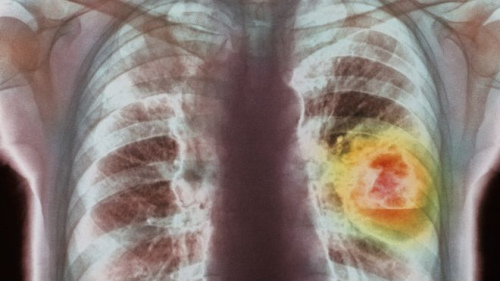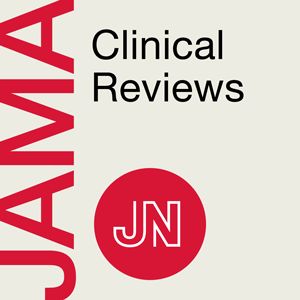

-
- 01 | 美国研究人员称可通过检测呼气诊 美国研究人员宣布说,他们通过研究发现一种..
- 02 | 呼气诊断乳腺癌的准确性与方法学 呼气挥发性有机化合物的检测和定量,通常被..
- 03 | 呼气就能测肺癌? 英国将对新仪 据外媒报道,英国的国民保健系统(NHS)医院..
- 04 | 荟萃分析发现呼气诊断癌症是否可 8月16日在线发表于JAMA Oncology上一篇荟萃..
- 05 | 红细胞寿命测定在血液系统疾病中 红细胞寿命测定在血液系统疾病中的临床应用..
- 06 | 碳14呼气试验上的DPM越大表示幽 早期幽门螺杆菌感染者一般不会有什么症状,..
-
- 01 | 红细胞寿命测定呼气试验仪斩获第 2019年8月5日,第十一届深圳创新创业大赛暨..
- 02 | 呼气诊断乳腺癌的准确性与方法学 呼气挥发性有机化合物的检测和定量,通常被..
- 03 | 红细胞寿命测定在血液系统疾病中 红细胞寿命测定在血液系统疾病中的临床应用..
- 04 | 美国研究人员称可通过检测呼气诊 美国研究人员宣布说,他们通过研究发现一种..
- 05 | 碳14呼气试验上的DPM越大表示幽 早期幽门螺杆菌感染者一般不会有什么症状,..
- 06 | 幽门螺杆菌感染是抽血检查好还是 1983年幽门螺杆菌(HP)首次从慢性活动性胃..
热点推荐
- 01 | 中科院无创筛查获新突破!做个深 食管癌是一种常见的恶性肿瘤,在全球范围内..
- 02 | 先亚集团研发的高新科技产品红细 一、概述 通过呼气测定来进行人体红细胞寿..
- 03 | Capnia Inc公司研发的便携式呼气 美国Capnia Inc公司研发了一款便携式呼气末..
- 04 | 以色列新型仪器用呼气成分诊断疾 我们身体“运行”的过程中会产生许多代谢物..
呼气诊断乳腺癌的准确性与方法学
呼气挥发性有机化合物的检测和定量,通常被用于酒后驾车、幽门螺旋杆菌的筛查,最近逐渐被用于癌症的诊断,目前被推荐检测方法的总体诊断准确性尚不明确。
2018年8月16日,《美国医学会杂志》肿瘤学分册在线发表英国伦敦帝国学院的研究报告,探讨了挥发性有机化合物呼气试验对癌症检测的诊断准确性,并且回顾了方法学所致结果变化的原因。
该系统回顾与荟萃分析首先通过OVID平台对Embase和MEDLINE数据库(2000年1月1日~2017年5月28日)进行电子文献检索(标题和摘要)。结合布尔运算符“AND”和“OR”,检索关键词:癌症、肿瘤、恶性肿瘤、挥发性有机化合物、VOC、呼吸、呼气。对于报告人类呼气挥发性有机化合物浓度影响因素的研究,还进行了单独的MEDLINE检索,关键词:呼吸“AND”方法学。检索仅限于以英语发表、分析呼气指定内源性挥发性有机化合物以诊断或评定癌症的人类研究。根据考科蓝图书馆推荐意见和流行病学观察研究荟萃分析指南,进行系统回顾和汇总分析。通过双变量荟萃分析,推算呼气挥发性有机化合物分析的接受者操作特征(ROC)曲线下面积(AUC)分层汇总分数。根据诊断准确性研究报告标准(STARD)列表和诊断准确性研究质量评定(QUADAS-2)工具对纳入研究进行评定。主要结局指标为已发表癌症挥发性有机化合物呼气检测的诊断准确性汇总。
结果共确定63篇相关文献和3554例患者,其中7篇乳腺癌文献和267例乳腺癌患者。所有报告来自生物标志1期研究。汇总分析结果发现:
接受者操作特征(ROC)曲线下面积(AUC)平均:0.94±0.01
敏感性:0.79(95%置信区间:0.77~0.81)
特异性:0.89(95%置信区间:0.88~0.90)。
能影响测试结果变化的因素包括呼气采集方法、患者生理状况、测试环境、分析方法。
其中,4篇乳腺癌文献的敏感性和特异性分别为:
敏感性:0.78、0.68、0.88、0.93(95%置信区间:0.67~0.86、0.45~0.86、0.76~0.96、0.68~1.00)
特异性:0.61、0.92、0.74、0.86(95%置信区间:0.45~0.75、0.73~0.99、0.58~0.86、0.57~0.98)
因此,该研究结果表明,对于多中心临床研究意向人群,挥发性有机化合物呼气试验可能具有癌症无创诊断的潜力,但是可能需要对呼气采集方法进行标准化,并对癌症诊断的呼气测试准确性进行盲法验证。该研究为将来的呼气测试诊断癌症研究提供了指导意见。
JAMA Oncol. 2018 Aug 16. [Epub ahead of print]
Accuracy and Methodologic Challenges of Volatile Organic Compound-Based Exhaled Breath Tests for Cancer Diagnosis: A Systematic Review and Meta-analysis.
George B. Hanna, Piers R. Boshier, Sheraz R. Markar, Andrea Romano.
Imperial College London, London, United Kingdom.
This systematic review and meta-analysis examines the diagnostic accuracy of volatile organic compound (VOC)-based exhaled breath tests for cancer and the challenges and strategies inherent in the use of breath testing for cancer diagnosis.
QUESTION: What are the diagnostic accuracy and methodologic challenges of volatile organic compound (VOC)-based exhaled breath tests for the detection of cancer?
FINDINGS: This systematic review and meta-analysis identified 63 relevant publications from which pooled analysis of outcomes found a sensitivity of 79% and specificity of 89% for the detection of cancer using VOC breath tests. Breath collection method, patient physiologic condition, test environment, and method of analysis may influence VOC test results.
MEANING: VOC breath tests may have potential for noninvasive cancer diagnosis, but methodologic standardization may be required.
IMPORTANCE: The detection and quantification of volatile organic compounds (VOCs) within exhaled breath have evolved gradually for the diagnosis of cancer. The overall diagnostic accuracy of proposed tests remains unknown.
OBJECTIVES: To determine the diagnostic accuracy of VOC breath tests for the detection of cancer and to review sources of methodologic variability.
DATA SOURCES: An electronic search (title and abstract) was performed using the Embase and MEDLINE databases (January 1, 2000, to May 28, 2017) through the OVID platform. The search terms cancer, neoplasm, malignancy, volatile organic compound, VOC, breath, and exhaled were used in combination with the Boolean operators AND and OR. A separate MEDLINE search that used the search terms breath AND methodology was also performed for studies that reported factors that influenced the concentration of VOCs within exhaled breath in humans.
STUDY SELECTION: The search was limited to human studies published in the English language. Trials that analyzed named endogenous VOCs within exhaled breath to diagnose or assess cancer were included in this review.
DATA EXTRACTION AND SYNTHESIS: Systematic review and pooled analysis were conducted in accordance with the recommendations of the Cochrane Library and Meta-analysis of Observational Studies in Epidemiology guidelines. Bivariate meta-analyses were performed to generate pooled point estimates of the hierarchal summary receiver operating characteristic curve of breath VOC analysis. Included studies were assessed according to the Standards for Reporting of Diagnostic Accuracy Studies checklist and Quality Assessment of Diagnostic Accuracy Studies 2 tool.
MAIN OUTCOMES AND MEASURES: The principal outcome measure was pooled diagnostic accuracy of published VOC breath tests for cancer.
RESULTS: The review identified 63 relevant publications and 3554 patients. All reports constituted phase 1 biomarker studies. Pooled analysis of findings found a mean (SE) area under the receiver operating characteristic analysis curve of 0.94 (0.01), sensitivity of 79% (95% CI, 77%-81%), and specificity of 89% (95% CI, 88%-90%). Factors that may influence variability in test results included breath collection method, patient physiologic condition, test environment, and method of analysis.
CONCLUSIONS AND RELEVANCE: The findings of our review suggest that standardization of breath collection methods and masked validation of breath test accuracy for cancer diagnosis is needed among the intended population in multicenter clinical trials. We propose a framework to guide the conduct of future breath tests in cancer studies.











